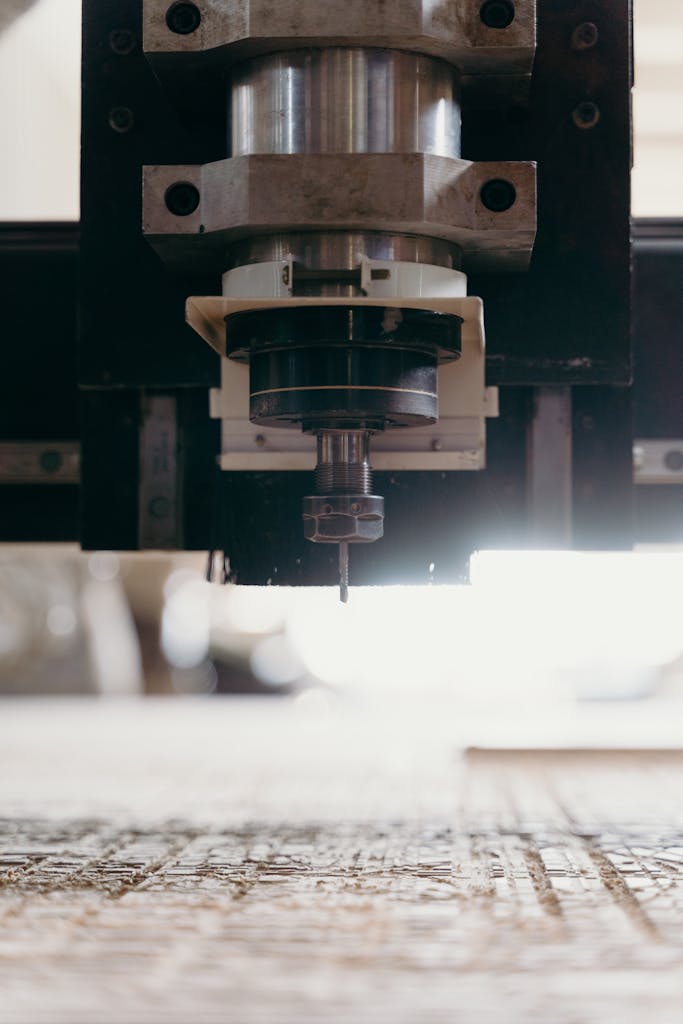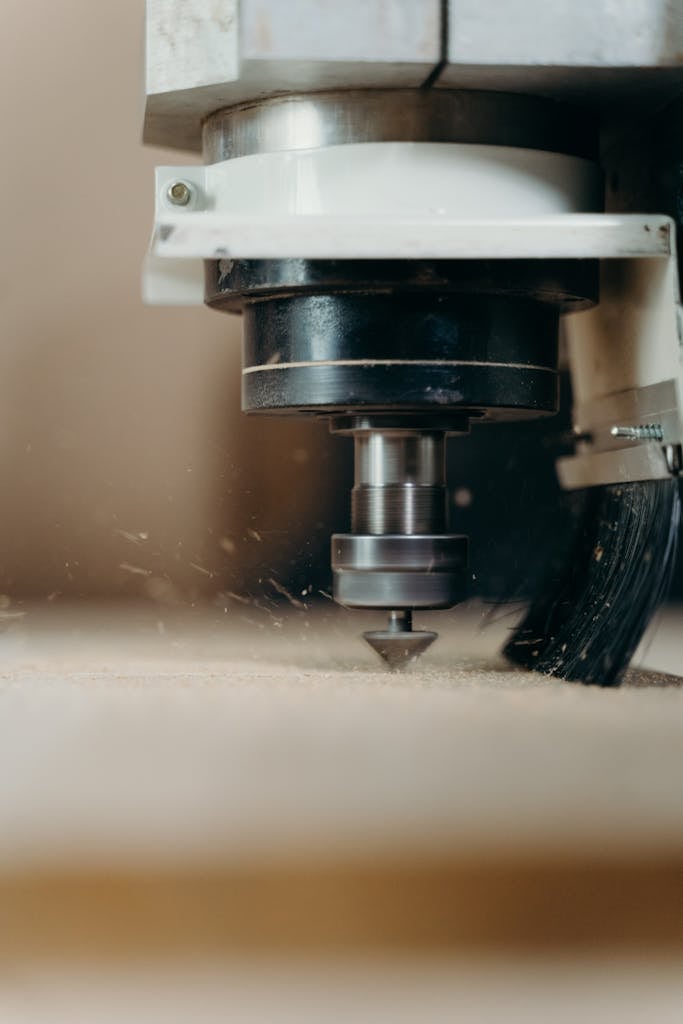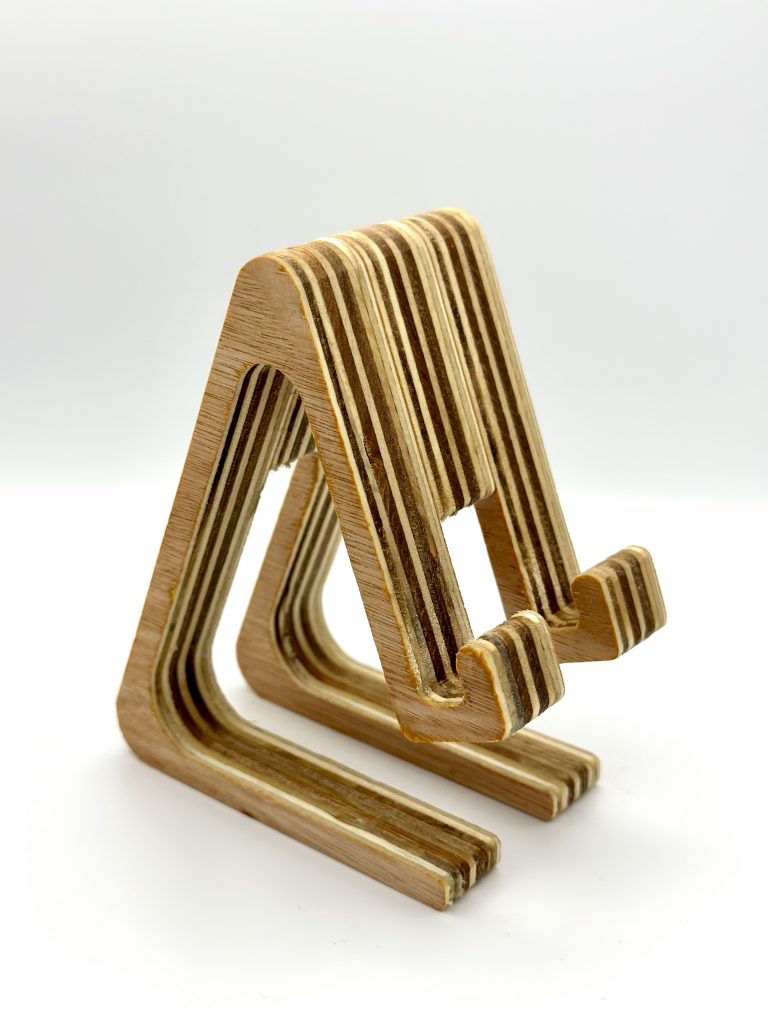If you’re experiencing unexpected behaviour from your CNC, like random stops, erratic movements, or communication errors between the controller and motor drives, you might be dealing with electromagnetic interference (EMI). This invisible electrical interference can be frustrating to troubleshoot, but with the right approach, you can diagnose and reduce EMI effectively, allowing your CNC to run smoothly and consistently. Let’s walk through how to identify EMI as the root cause and some proven ways to mitigate it.
I’ve made a quick video to help guide you through diagnosing and fixing EMI on your CNC, click the link below to have a look and leave a comment to let me know if you have any questions:
What is Electromagnetic Interference (EMI)?
Electromagnetic interference occurs when electromagnetic fields disrupt the normal operation of electronic equipment. On a CNC machine, this interference can originate from various sources, particularly high-powered devices like dust extractors, routers, or even the CNC’s own control systems. EMI can cause:
- Random pauses or stops during operation
- Unintended movements or misalignments
- Communication errors between the CNC controller and motor drives
In short, EMI can create a frustrating cycle of troubleshooting without clear results—until you narrow down EMI as the source.
Step 1: Diagnosing EMI on Your CNC
When you notice unexpected behavior on your CNC, here’s a quick diagnostic process to determine if EMI might be the issue:
- Turn Off Your Dust Extraction: Dust extraction systems are one of the most common sources of EMI on a CNC. Start by turning off your dust extractor, then see if the issue resolves.
- Stop the Router and Raise the Z-Axis: Temporarily stop your router and raise the Z-axis, resetting it to zero. This will help isolate potential interference sources.
- Run the G-Code Again: With the dust extraction and router off, rerun your G-code. If the program now runs without any issues, EMI is likely the culprit, and it’s time to take steps to eliminate it.
Step 2: How to Fix EMI on Your CNC
Once you’ve identified EMI as the problem, there are several approaches to mitigate it. Here are a few effective solutions you can try:
1. Use a Separate Power Circuit
One of the most effective ways to prevent EMI is to run your CNC controller on a dedicated power circuit separate from other high-powered devices like dust extractors or routers. This isolates the CNC’s control electronics from potential EMI sources. However, many workshops are not set up with separate circuits.
If you can’t set up a separate power circuit, consider using an Uninterruptible Power Supply (UPS). A UPS can help smooth out power fluctuations and reduce EMI interference, providing a more stable power source for your CNC controller.
“Isolating your CNC’s power supply from high-powered devices is a solid first step in reducing EMI and improving reliability.”
2. Earth Your Dust Collection Hose
Dust collection hoses, especially plastic ones, can build up static electricity, which contributes to EMI. To counter this, wrap a copper wire around your dust collection hose, spiraling it along the length of the hose. Then, connect this wire to an earth ground or an earthing plug.
This simple step helps ground static charges, reducing the likelihood of EMI. You can also consider using anti-static dust hoses or grounding other equipment in your setup to minimize static buildup across the workspace.
Tip: Anti-static hoses and properly grounded equipment are great long-term investments to prevent static EMI.
3. Install Ferrite Cores on Control Cables
Ferrite cores are inexpensive components that act as filters to reduce high-frequency noise on your control cables. Wrap ferrite cores around each control cable between the CNC controller and other components (like the motor drives). These cores dampen interference and help prevent it from reaching sensitive areas of the CNC system.
Ferrite cores are especially useful in multi-machine setups or areas with high electromagnetic activity. By absorbing and filtering out high-frequency signals, they significantly reduce the potential for EMI-related issues.
“Ferrite cores are a cost-effective solution that can have a big impact on EMI reduction.”
Step 3: Regular Maintenance and Monitoring
Once you’ve applied these solutions, it’s a good idea to regularly monitor your CNC’s performance, particularly after making electrical or environmental changes in your workshop. Some helpful steps to keep EMI at bay include:
- Inspecting Earth Connections: Ensure that your grounding connections are secure and free of corrosion, especially if you’re using copper wire on dust collection hoses.
- Cleaning the CNC Area: Dust and debris can sometimes contribute to static buildup. Regularly clean around control electronics and dust collection hoses to prevent static accumulation.
- Checking for Cable Wear: Damaged or worn cables can become susceptible to EMI. Regularly inspect control and power cables, replacing any that show signs of wear.
These preventive measures will help keep your CNC operating smoothly and ensure that any EMI interference remains under control.
Additional Tips for Troubleshooting CNC EMI
If you continue to experience issues, here are a few more suggestions:
- Use Shielded Cables: If EMI persists, consider upgrading to shielded cables for your CNC’s control and motor connections.
- Keep Cables Organized: Avoid running power and control cables in close parallel paths, as this can increase EMI. Use separate channels for each if possible.
- Isolate Problematic Devices: If certain devices frequently cause EMI, try moving them farther from the CNC controller or placing barriers to reduce interference.
The Benefits of EMI Prevention
Taking the time to reduce EMI on your CNC can significantly improve performance, consistency, and longevity. While some solutions might seem simple, they can make a huge difference, especially in preventing unexpected stops or errors that interrupt your workflow. By implementing these measures, you’ll have a CNC that runs smoothly, helping you stay productive and avoid costly delays.
Final Thoughts
Electromagnetic interference can be a frustrating issue for CNC owners, but it’s manageable with the right approach. From grounding your dust collection hose to adding ferrite cores, each step you take to prevent EMI contributes to a more reliable and efficient setup. Give these tips a try, and let me know how they work for you!
If you found this guide helpful or have additional questions, leave a comment below. And if there are other CNC topics you’d like covered, let me know—I’m always looking for ways to help improve your workshop experience.



